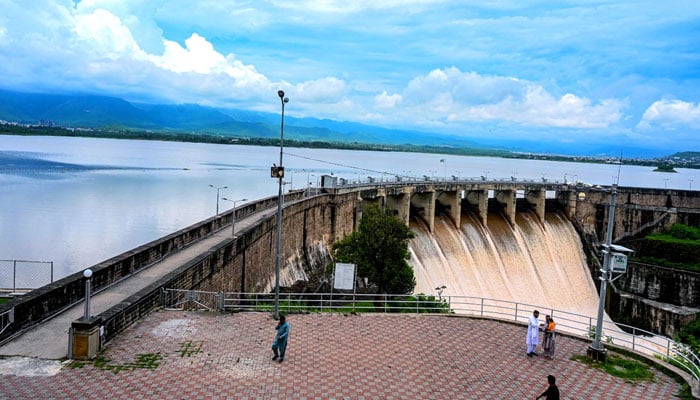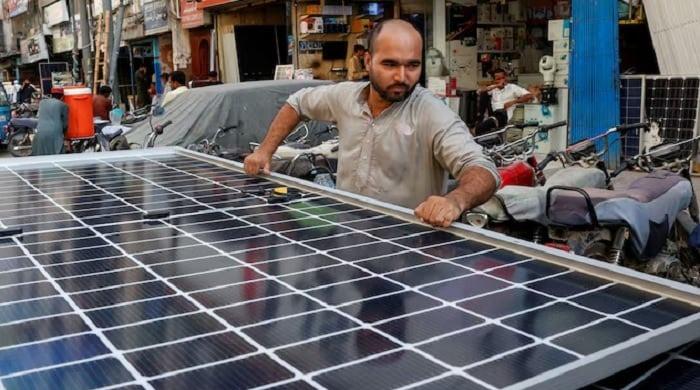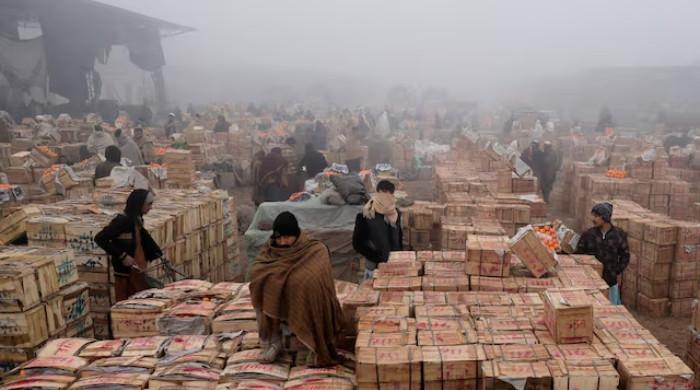Water for dollars
We pray for rain but don't know how to live with or manage water once it arrives
July 24, 2025

In the 60-odd years of my life, as far as memory serves, the rain has been falling every monsoon and otherwise. Sometimes with ferocity, and at other times gently, but fallen it has.
The water from the rain is another story. It has been this big, bad ogre, which none of us have been able to control and have simply been ravaged by it. Faiz expressed this in his unparalleled poem "Meri Doly Shoh Darya", which he penned watching a young girl stranded in the flooded lands, while he was flying in a helicopter with the original Bhutto, during the devastating floods of 1973.
Our lack of control over this water in Pakistan is evident at multiple levels. That, however, is a subject for another day.
Water, whether from the supply side or the demand side, is like an angry lion. Be it the melting of glaciers or rainfall in the catchment areas of our lifelines — our rivers — the resulting swelling of rivers, the fury of hill torrents or the overflow of sewers and drains in our cities, we are unable to manage or coexist with this water ogre.
We pray for rain but don't know how to live with or manage the water once it arrives, an inability deeply embedded in the Pakistani system.
The stench of this failure lingers long after the rain has ceased and the floodwaters have receded. We grow accustomed to this stench, just as we have grown used to the foul streams of Islamabad, the piles of filth that litter our cities and the rot of our society.
We use water cruelly, or rather, inequitably. Let me explain. We procreate amply and our population has risen uncontrollably, yet our domestic household water usage across the entire population — 50 to 70 litres per person a day — is among the lowest in the world. Surprisingly, then, our total freshwater extraction for usage is amongst the highest 25% of the world; at 831 cubic metres per person per day.
Let me say this another way. We extract around 831,000 litres of water per person per day, yet our households consume only a sixth of a per cent of this per person per day!
Where is all this "missing" water? Either a lot is wasted, or the usage is unaccounted for — or it could be a combination of both. While water experts will rave about reasons, I simply want to discuss an angle of inequity that we have not hitherto considered.
This is the usage of water in our agriculture, and within this, the aspect of water we cruelly export without thought, all for gaining a little bit of foreign exchange.
Each year, Pakistan sends away so much water hidden inside its crops that it’s almost like exporting three out of every four drops it pulls from rivers and wells — about 134 billion cubic metres of water leave the country while it withdraws around 177 billion. In other words, for every 100 litres Pakistan uses, roughly 75 litres are shipped out embedded in exported food, making local water shortages far worse. Then, we wonder about the availability of water for personal household use.
Wait, I may have a slightly defective argument going on here. What about the employment provided by the agricultural sector? Pakistan’s agricultural sector, which virtually exports about 134 billion cubic metres of water, employs roughly 22 million people.
Each job in the agriculture sector carries nearly six million litres of water out of the country every year! The 134 billion cubic metre figure comes from the FAO-CWASI database; the latter stands for "Coping with Water Scarcity In a globalised world", the name of the EU-funded research project that developed the harmonised virtual-water and water-footprint database.
This project sums up the water embedded in the production of 370 different agricultural commodities traded internationally. In Pakistan's case, it is overwhelmingly driven by its three most water-intensive export crops — rice (over 90% of its blue water exports), followed by wheat and cotton — with additional virtual water contributions from sugarcane, fruits (mangoes, oranges, apples) and vegetables (potatoes, onions).
Picking up rice, cotton, mangoes, wheat flour and cereals, and assuming 2023 as the average year, we earned roughly $6 billion to $7 billion while virtually exporting 134 billion cubic metres of our water. That is nearly 21,000 litres of water export for earning a single dollar in foreign exchange.
Even more strikingly, this implies that each dollar of foreign exchange is costing us nearly a year's worth of person-days of water even at the low level of personal consumption in Pakistan.
I close with the following question. Who earns and benefits from that dollar earned? Inequitable use of water is a gross understatement by me.
Disclaimer: The viewpoints expressed in this piece are the writer's own and don't necessarily reflect Geo.tv's editorial policy.
The writer is a development professional working on intersectional issues in society, economics and climate. A former World Bank staff member, he is currently running his own social impact advisory, Reenergia.
Originally published in The News









